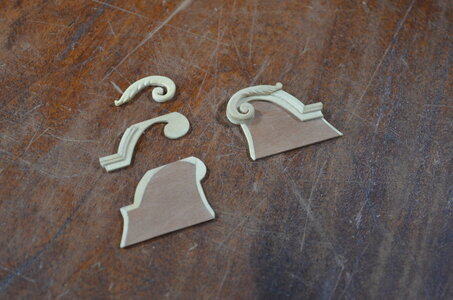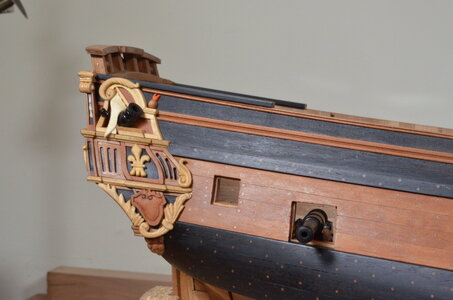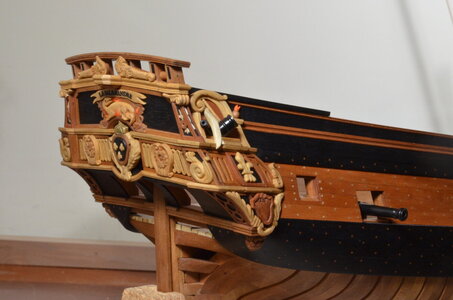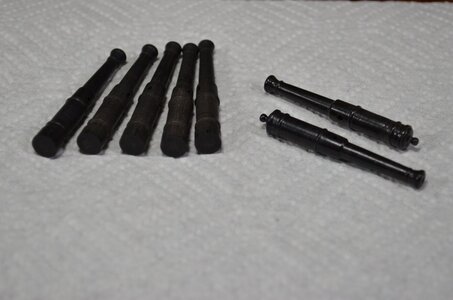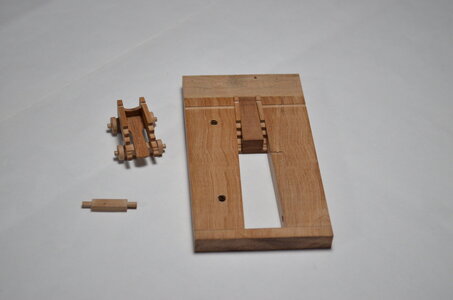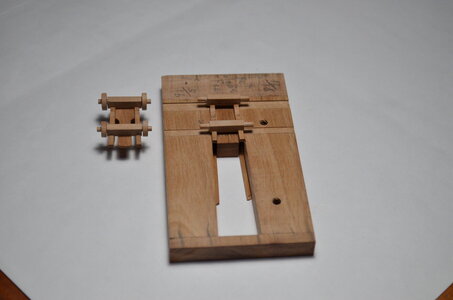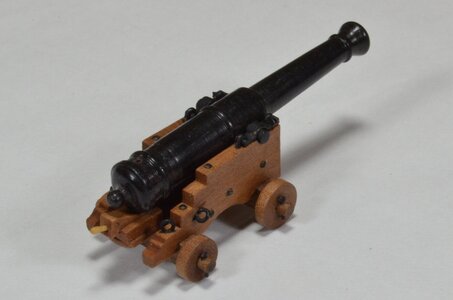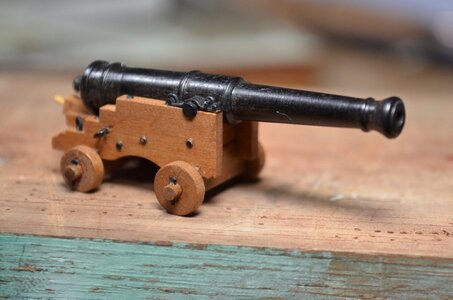So it's been a while since I had some progress on my Salamandre model that I could share. I'll blame it on the current world condition, but it might be me. It seems like the duties and the chores of day-to-day living are more complicated and take so much longer to do these days.
Ah, but the moments I spend at the work bench with La Salamandre are still restorative. In my last posting I was just getting ready to start building the top third of the quarter galleries. That area includes, among other things, carvings of a mortar barrel, a long-gun barrel, and a flag. Jean Boudriot, as he often does, has drawn these features quite differently in different plates. I know that a few of you have the drawings so I will simply mention that he draws this area as a relief carving in PL. X and as more of a shadow-box carving in PL. XII. Truly, the differences are fascinating and if you have access to the drawings it will take some very close scrutiny to fully grasp the points I am referring to. And I will also admit that I may be lending a tiny bit of personal bias, because I really wanted to addhe dramatic effect of the shadow-box approach to my model.
The middle and lower sections of the quarter gallery carvings required filler blocks before the carvings could be added, but the shadow-box method only required that I make a backdrop and frame, into which carvings could be installed. The photo below is the 2 backdrops - one assembled.
View attachment 193076
Since this is not a relief carving, I turned both gun barrels and the flaming bomb on the lathe. Guns are ebony and the bomb is pear. The flag is holly and it kept me up a few nights. It's not perfect but I'm happy!
Oh that gun wasn't there in my last post. I'll get to that in a moment.
View attachment 193119
View attachment 193120
No special tricks here. Just careful measurements, tiny pencil marks, and constant use of calipers. Fortunately this isn't a ship of the line!
View attachment 193142
View attachment 193143
Obviously, the carriage cheeks were all sliced from the block at the top center. I find the most challenging aspect of building these carriages to be gluing them together so their sides are perfectly plumb and they splay out aft at the correct angle, and they're actually symmetrical, etc. So I built a jig for that which is demonstrated in my next two photos.
View attachment 193144
I placed an assembled carriage next to the working jig so the viewer can easily make out the 2 checks that are clamped in the jig. The jig consists of 2 parts, the outer frame and the wedge between the carriage cheeks. Also there is an axletree in the picture. The carriage will become a stable unit once a pair of axletrees is glued to the bottom of it. So we next flip the jig over to make that possible.
View attachment 193145
There were notches cut in the cheeks while they were in the jig. That gives them the precise splay angle. You can see the rabbit cuts in the jig where the saw blade travelled. The same saw settings were used to notch all 16 cheeks.
Next note two thin strips of wood to either side of the interior of the jig. They are lifting the cheeks about one sixteenth of an inch higher than the underside of the jig, at this stage of the assembly process, so the axletrees can be easily glued without gluing everything to the jig. I used a fairly liquid form of superglue. A snug joint and almost no glue at all does a great job here. FYI, these carriages are about an inch long.
View attachment 193146
Here's the first one. Now back to the bench to finish the rest. That will no doubt take me another week.
View attachment 193150










 !
! 